There is a city-wide strike in Buenos Aires today, November 20.
The streets and subways are so empty, it feels just like a lazy Sunday afternoon.

Want to save this recipe?
Enter your email & I'll send it to your inbox. Plus, get great new recipes from me every week!
Nov 20, 2012: The normally busy 9 de Julio street is empty
Today, the workers’ unions have organized a strike involving garbage collectors, state workers, bus-drivers and even part of the the subway lines. This time, the main aim of the strike is to increase the minimum wage, as well as to increase the minimum taxable income. Similar strikes in the past have worked to raise the minimum wage, and I suppose this time shouldn’t be any different.
It seems that every two weeks a major political event like this takes place.
The last major event was the “Cacerolazos de 8N” which I talked about in my Dulce de Leche Muffins post and is still making newspaper headlines. Today we have a city-wide strike, and in roughly two weeks, on December 7, the Fernandez government will seek to implement a law to dismantle the largest media monopoly in Argentina, Grupo Clarin, which has strong anti-government tendencies. I’ll talk a little more about “7D” (as the upcoming event is called) as the deadline approaches.
Since today is another important day in Argentine politics, I thought it apt to talk about Argentine empanadas, a common savory snack found in almost every Argentine restaurant or cafe.
What exactly is the empanada?
The legendary empanada.
An empanada (called pastel in Brazilian Portuguese) is a stuffed bread or pastry baked or fried in many countries in Western Europe, Latin America, and parts of Southeast Asia. The name comes from the Galician, Portuguese and Spanish verb empanar, meaning to wrap or coat in bread.
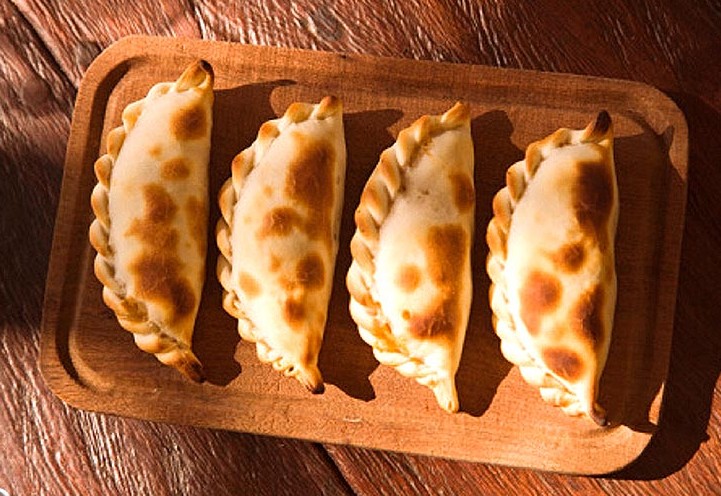
Empanadas (Source: Gastronomia Argentina)
Empanadas are made by folding dough or bread around stuffing, which usually consists of a variety of meat, cheese, huitlacoche, vegetables or fruits, among others.
Empanadas trace their origins to Galicia and Portugal. They first appeared in medieval Iberia during the time of the Moorish invasions. A cookbook published in Catalan in 1520, the Libre del Coch by Ruperto de Nola, mentions empanadas filled with seafood among its recipes of Catalan, Italian, French, and Arabian food. In turn, empanadas and the similar calzones are both believed to be derived from the Indian meat-filled pies, samosas. All these pastries have common origins in the Middle East and Central Asia.
In Galicia and Portugal, an “empada” is prepared similarly to a large pie which is then cut in pieces, making it a portable and hearty meal for working people. The fillings of Galician and Portuguese empanadas usually include either tuna, sardines, or chorizo, but can instead contain cod or pork loin. The meat or fish is commonly in a tomato, garlic, and onion sauce inside the dough. Due to the Portuguese colonization of Brazil and a large number of Galician immigrants in Latin America, the empadas and empanadas gallegas has also became popular in those areas.
The dish was carried to Brazil and Indonesia by Portuguese colonizers, where they remain very popular, and to the Hispanic America and Philippines by Spanish colonizers.
In Singapore, the curry puff is an evolutionized version of the empanada, which was why I feel so fondly about empanadas, since they sort of remind me of home.
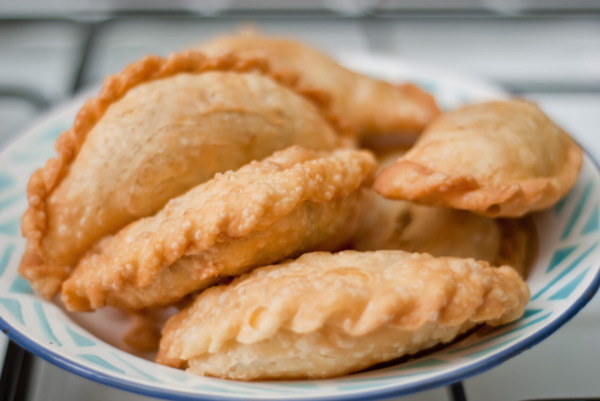
Singapore fried curry puff (Source: Indochine Kitchen)
Argentine empanadas
Argentine empanadas are often served at parties as a starter or main course, or in festivals. Shops specialize in freshly made empanadas, with many flavors and fillings.
The dough is usually of wheat flour and beef drippings with fillings differing from province to province; in some, it is mainly chicken; in others, beef (cubed or ground depending on the region) is used, perhaps spiced with cumin and paprika; others include onion, boiled egg, olives, or raisins. Empanadas can be baked (Salta-style) or fried (Tucuman-style). They may also contain ham, fish, humita (sweetcorn with white sauce) or spinach; a fruit filling is used to create a dessert empanada. Empanadas of the interior regions can be spiced with peppers. Many are eaten at celebrations.
In those places (usually take-away shops) where several types are served, a repulgue, or pattern, is added to the pastry fold. These patterns indicate the filling. In larger cities, empanadas are more commonly eaten as take-away food, sourced from restaurants specializing in this dish. They usually carry dozens of different varieties, which is not the case in northern provinces, where empanadas are usually made at home, with more traditional recipes.
EMPANADAS DE CARNE (BEEF EMPANADAS) – Makes 30
Ingredients:
1) 1 kg of beef (either minced beef or any cut you like cut into small cubes)
2) 5 onions
3) 500g of spring onions, chopped
4) 4 hard boiled eggs (cut into small pieces)
5) 2 eggs (beaten, for brushing the empanadas)
6) 30 empanada store-bought skins
7) A small bowl of flour
Steps:
1) Dice onions and chop spring onions
2) Saute onions and spring onions in a wok until well cooked
3) Cut beef into cubes (if not use minced beef directly)
4) Add beef to cooked onions and spring onions in wok and brown it till slightly cooked, then set aside and let cool
5) Once filling is cooled, add in cut hard boiled eggs and mix together
6) Place empanada skins on a cool flat surface sprinkled with flour
7) Put a tablespoon of filling in the middle of the empanada skin, and make some folds inwards to close the gaps
8) Brush the outsides of the empandas with remaining eggs
9) Bake empanadas for 10 – 15 minutes in pre-heated oven at 220 deg cel (or until the outside is golden brown)
Saute diced onions and chopped spring onions in a wok:
Until onions and spring onions are cooked and soft:
Add in cut beef:
And cook until beef is browned:
Add in cut hard boiled eggs:
Fill the empanada skins with beef filling, making some folds inwards to close the gaps:

Empanadas (Source: Gastronomia Argentina)
Fresh out of the oven!

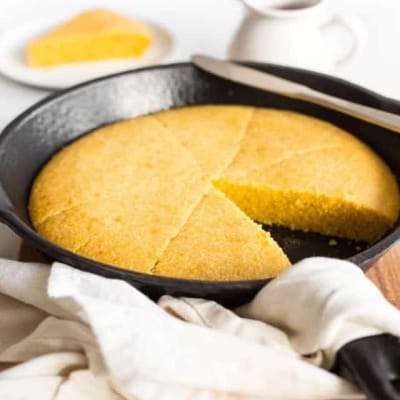
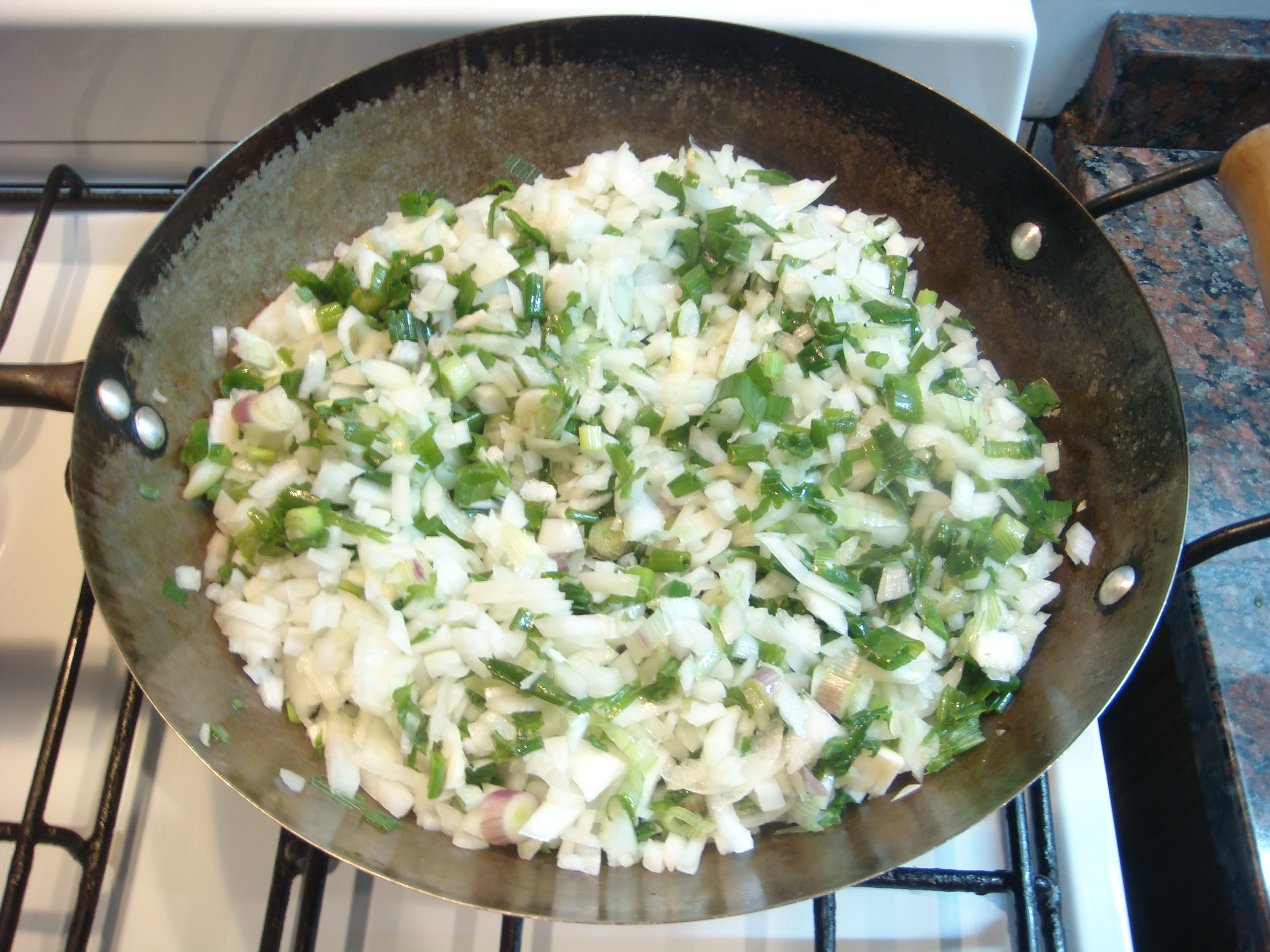

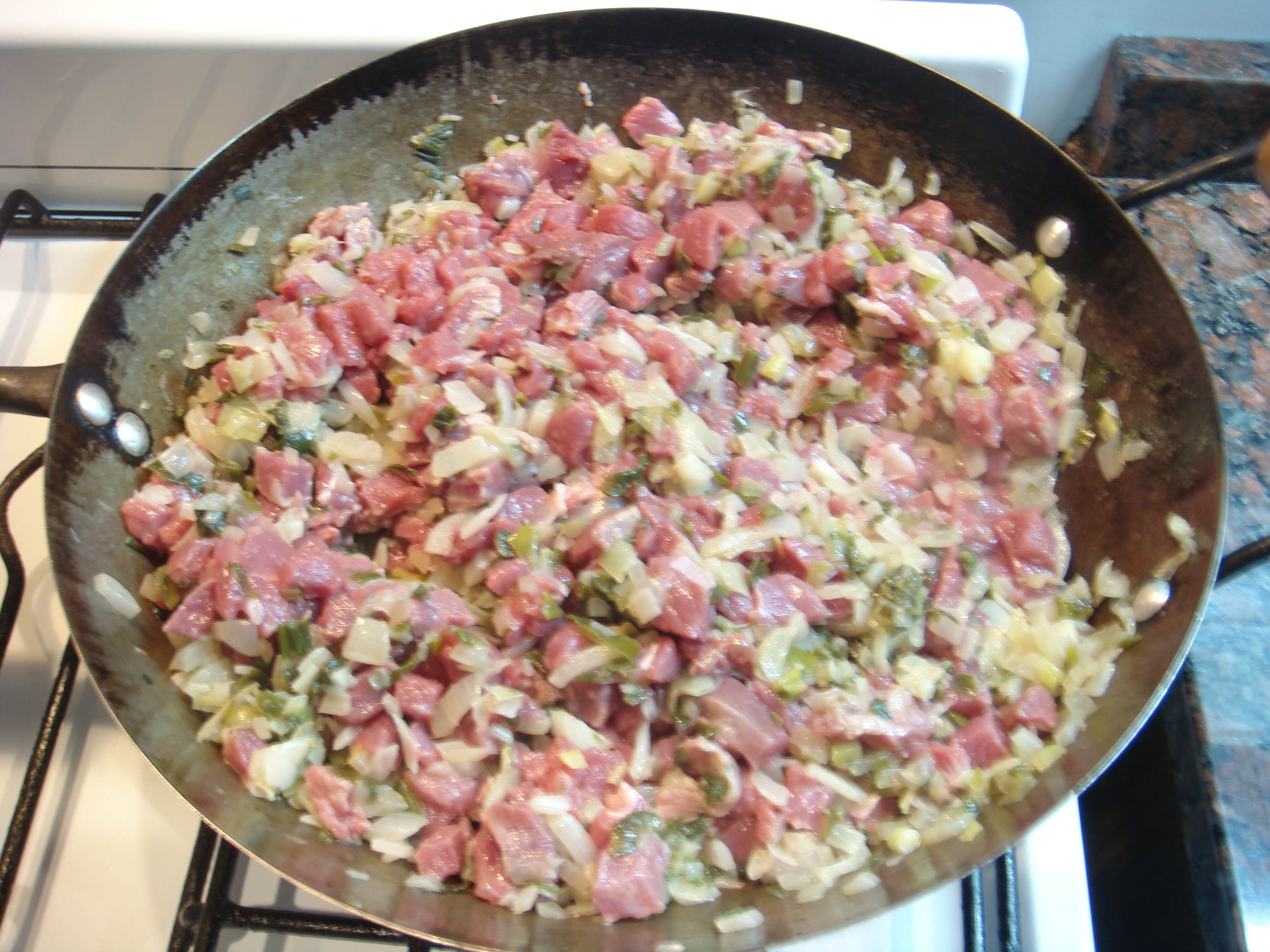
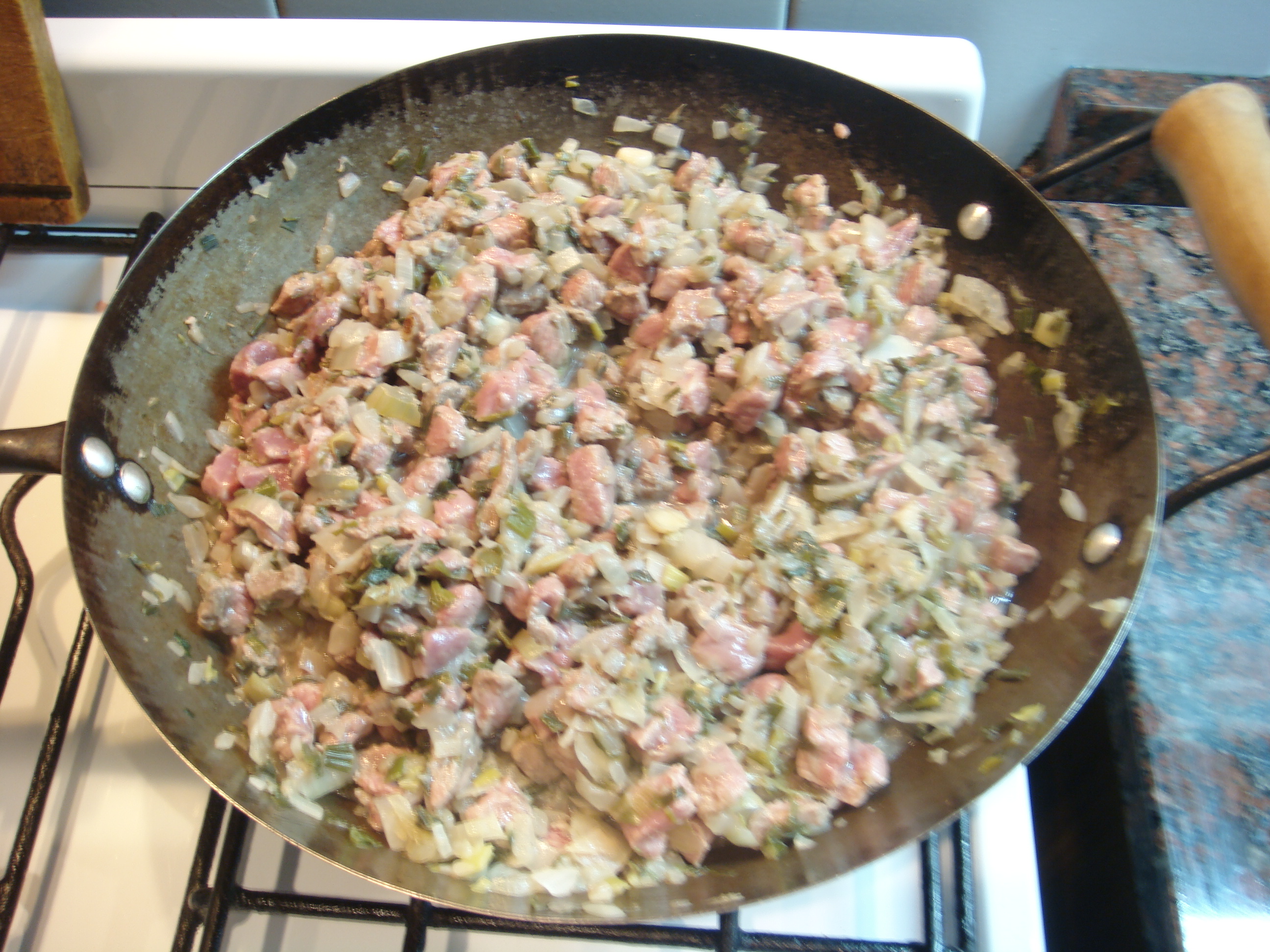
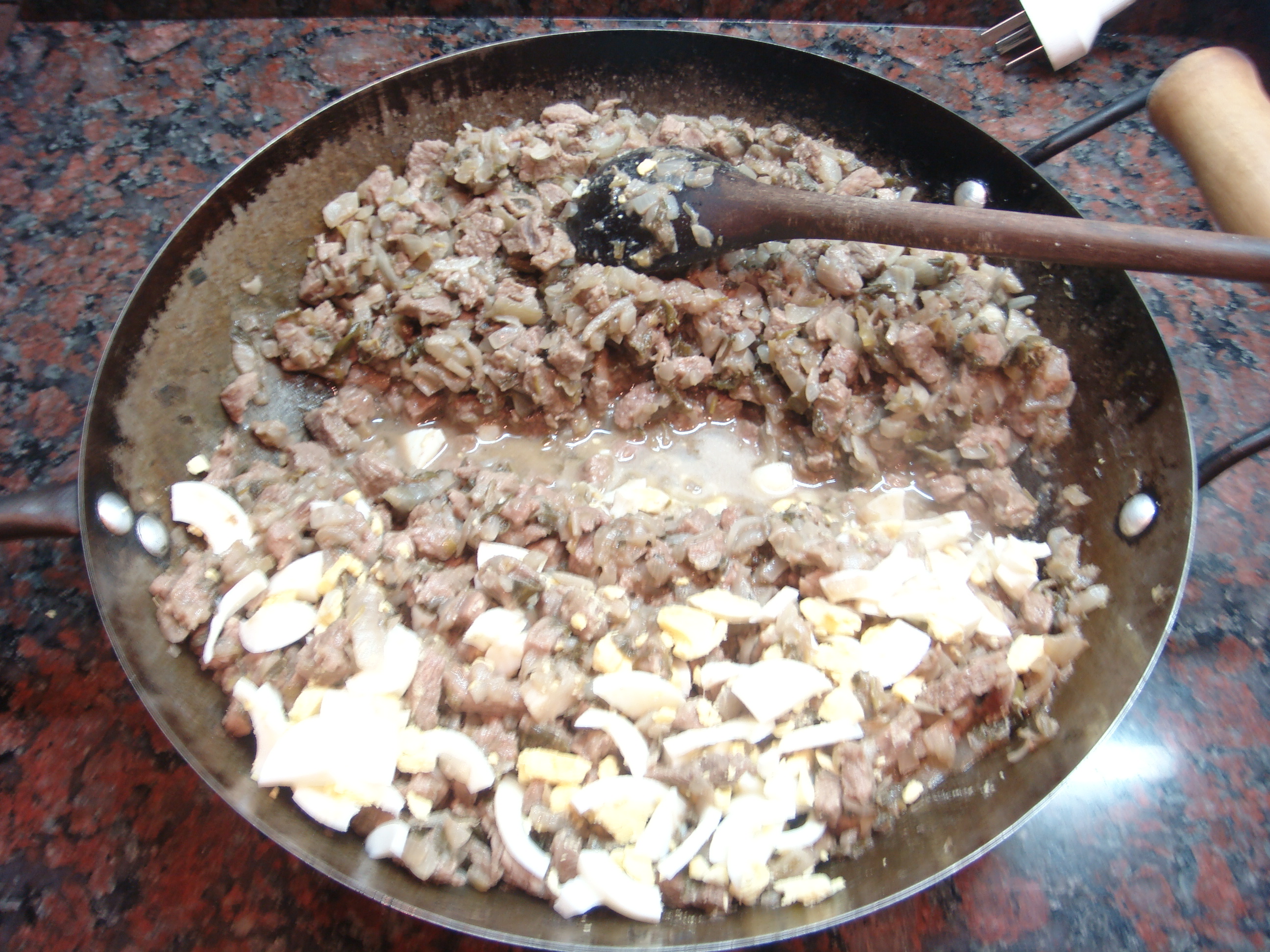
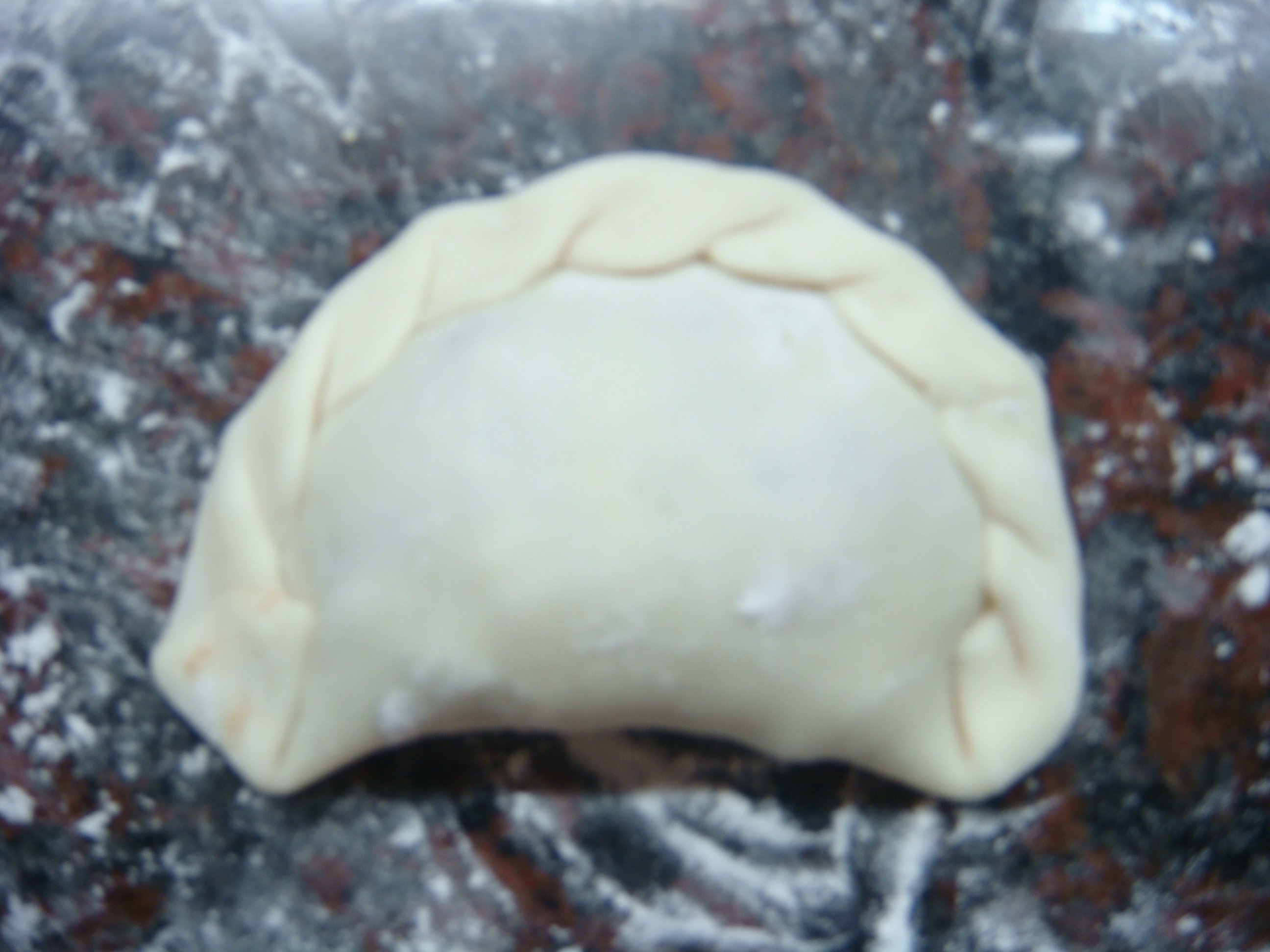

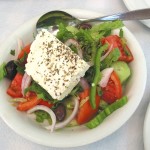



wow flea! they really resemble curry puffs! PROOOO 😉
heeeellllo jin! they do don’t they? let’s cook and bake together when Im back in Feb!!
Wow… These look wonderful. I can’t wait for the weekend to try it out!
Hello Briony! hope you manage to get empanada skins in SG! not sure what you can use to substitute them with… curry puff skins should do the trick I believe!
I googled how to make empanada skins.. so will be d.i.y-ing the skins
Cool! if it turns out well let me know how u did it!! Good luck!
I love empanadas! I crazy for empanadas. They are like hot pocket 🙂 Perfect on the go meal AND snack. Yours look so professional, perfectly nipped and shaped. Very crafty hands 🙂
Yes empanadas make the best meal and snack 🙂 In singapore we have something similar but fried and filled with curry chicken!! Spicy with a punch!! Maybe I should try making the singapore curry puffs one day too!!
Thanks for subscribing to my blog! I’m excited to try out some of your recipes. Everything looks so delicious.
Hello!
Thank you for dropping by my blog! And for subscribing too!
Let me know if you do try out any recipe! Right now my favorite dish to recommend is the Pan-seared fish fillets with tomato cream sauce I made over the weekend!
If you crave fish one day this is easy and fast to make! 🙂
xoxo